Bass have a well-earned reputation as amazing game fish among anglers. They’re usually fished with “catch-and-release” practices in mind, but occasionally people do bring these magnificent creatures home. They make for good trophies and even greater meals!
Can you eat bass? You can absolutely eat bass, but how well your experience goes depends on a few factors. Their taste can be affected by the environment and algae bloom. Younger bass are better to eat, offering softer meat with less toxin buildup. Smallmouths are quite popular, though other species of bass still make for decent meals. Clean, descale, and gut your bass. Freeze or heat thoroughly to handle parasite risk, then choose your preferred cooking method.
Some bass are better off on a trophy wall than your family’s plates. But if you want to eat bass, you should find out more about the different types of bass as well as the right way to prepare and cook it. You might also want to take into account the location where it was caught as well as the local regulations in that area. We’ll go over a few factors you need to watch for below.
Can You Eat Bass?
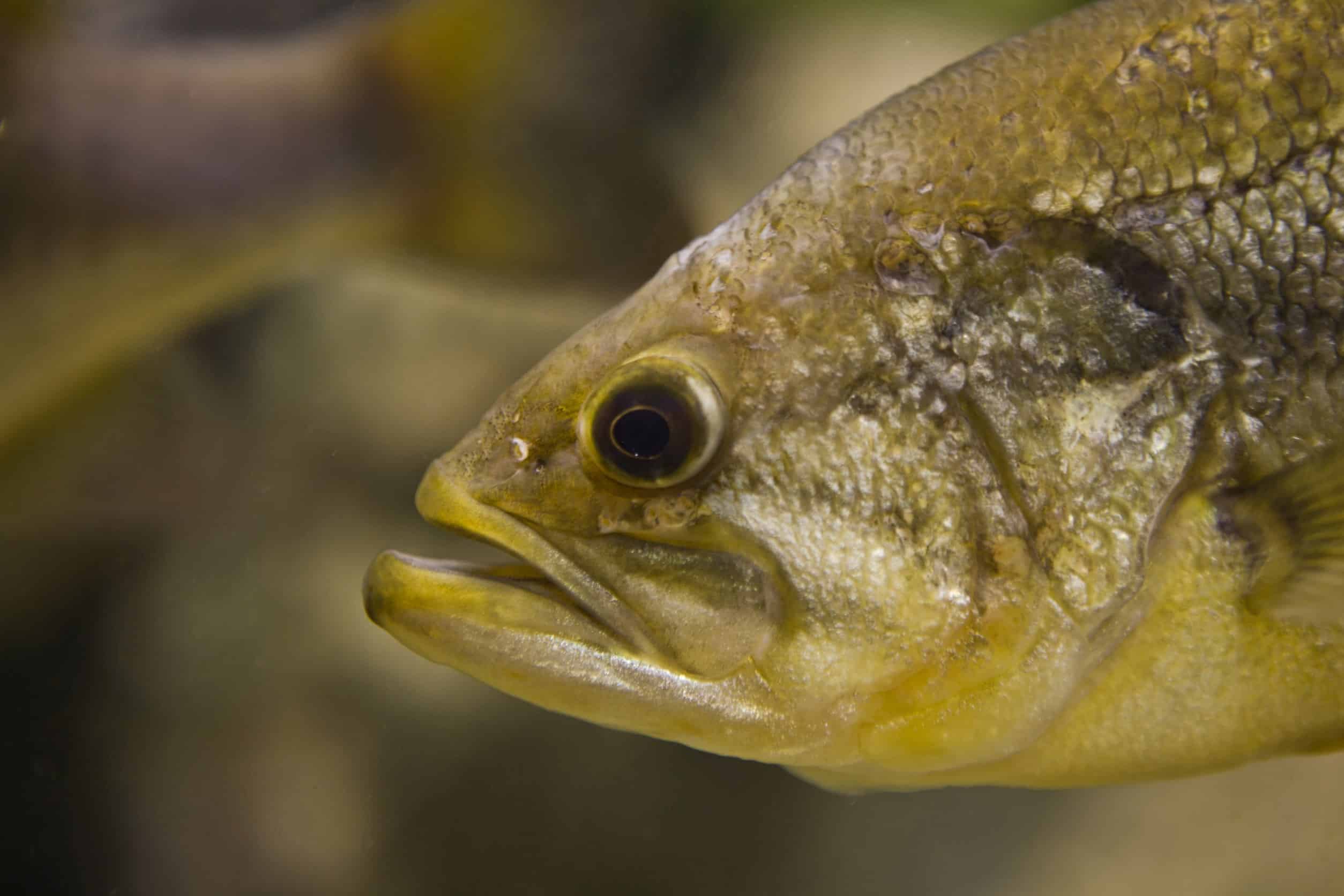
Bass are perfectly edible, but age can diminish their safety and palatability. Older bass tend to accumulate toxins over their lifetime, which can prove harmful when consumed. One of the most common dangers associated with bass is mercury poisoning. This often leads to motor functions being inhibited, along with other long-term neurological damage.
It’s for this reason that pregnant women are discouraged from eating bass – striped and black bass are especially dangerous to them.
Larger bass are also more likely to have worms and other parasites in their flesh. Due to this, younger bass are preferred for meals. The best length for them is between 10-14 inches (254-356mm) long. Anything smaller won’t have enough meat worth filleting, while anything larger will likely be festering with worms, parasites, or algae.
Bass Nutritional Value and Taste
Nutritional Value
Bass are very rich in protein for their mass. They’re also quite low in both fat and calories, making them a great weight-loss food. They contain omega-3 fatty acids that are crucial for maintaining cholesterol in the body.
Bass have significant quantities of selenium, which is an antioxidant that reduces inflammation in the body. Selenium is also known to bolster your immune system and thyroid functionality.
Taste
Like koi fish, the taste of bass can be affected by a few different factors. The most decisive one is their environment, as this also determines their diets. Muddy or polluted waters will permeate the meat of any fish in the area, and that taste will compound if your bass feeds on prey dwelling in tainted waters.
Algae bloom can lead to similar effects, imparting an earthy or metallic taste to your bass. This happens when the algae population spikes abruptly. Oxygen in the water is depleted, driving fish off or killing them entirely. Algae bloom also introduces toxins that cause vomiting, fevers, and diarrhea among humans, with prolonged exposure compromising liver function.
The “proper” taste of bass is quite clean and mild. Largemouths have a bit more fishiness in their meat, but most species of bass have a subtle, tangy sweetness. Their meat is tender but firm, making them a bit better at handling heat and slow-cooking than flakier fish.
Smallmouth vs Largemouth Bass
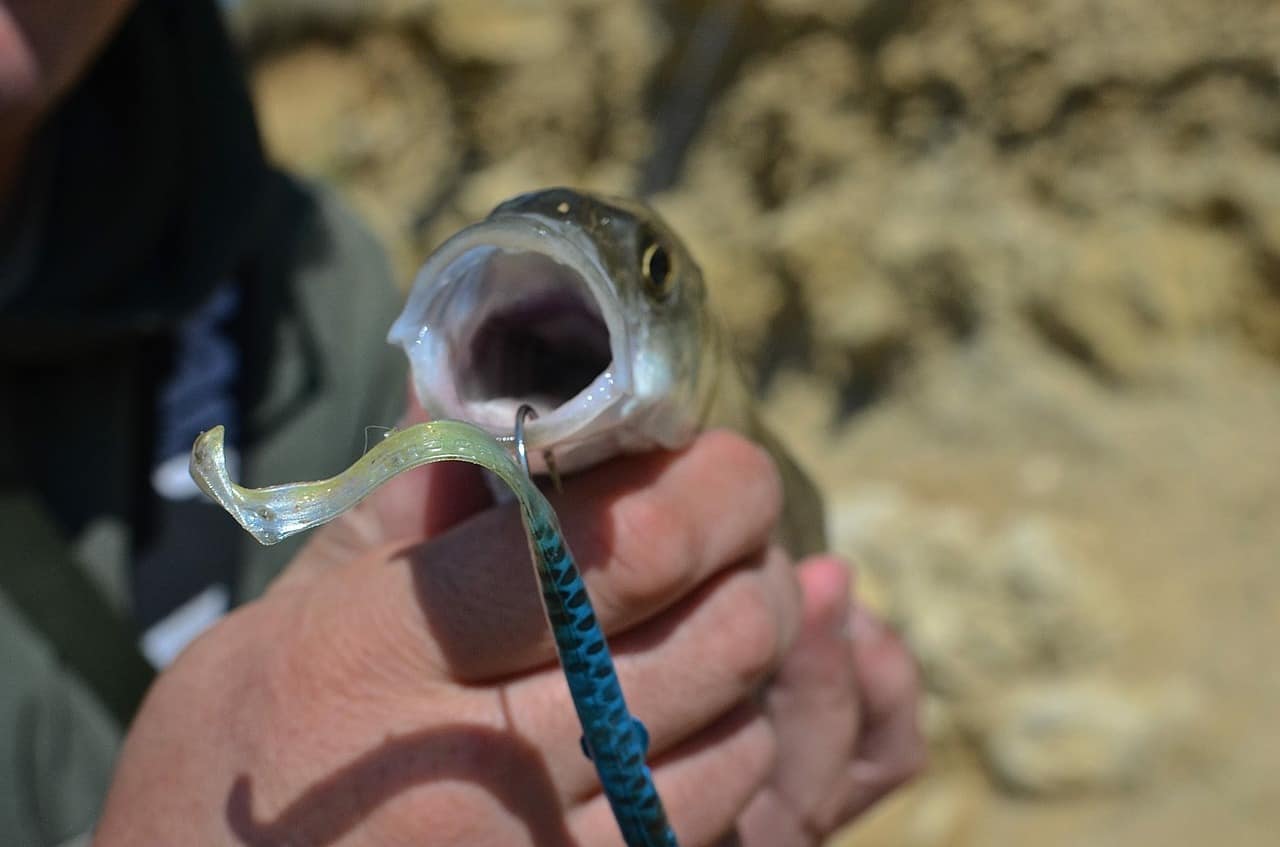
While there are a lot of differences between bass species, you’ll likely have to learn this one first. Smallmouths and largemouths tend to dwell in similar habitats. Knowing how to tell these two apart is an important introductory skill for anglers to pick up.
Smallmouth bass have a cleaner, sweeter taste. They also tend to be leaner, which means more good meat. This difference evens out though, as largemouths often grow a lot bigger than smallmouths of comparable age. Most anglers say smallmouths taste better, but it’s best finding out for yourself.
Largemouths have a fishy scent that might turn people off. They also have slightly tougher meat – nowhere near the level of tarpon, but the difference is pretty noticeable compared to other bass. Largemouth meat is likely to taste somewhat earthy due to their general preference for cover and muddy, shallow waters.
Preparing Bass
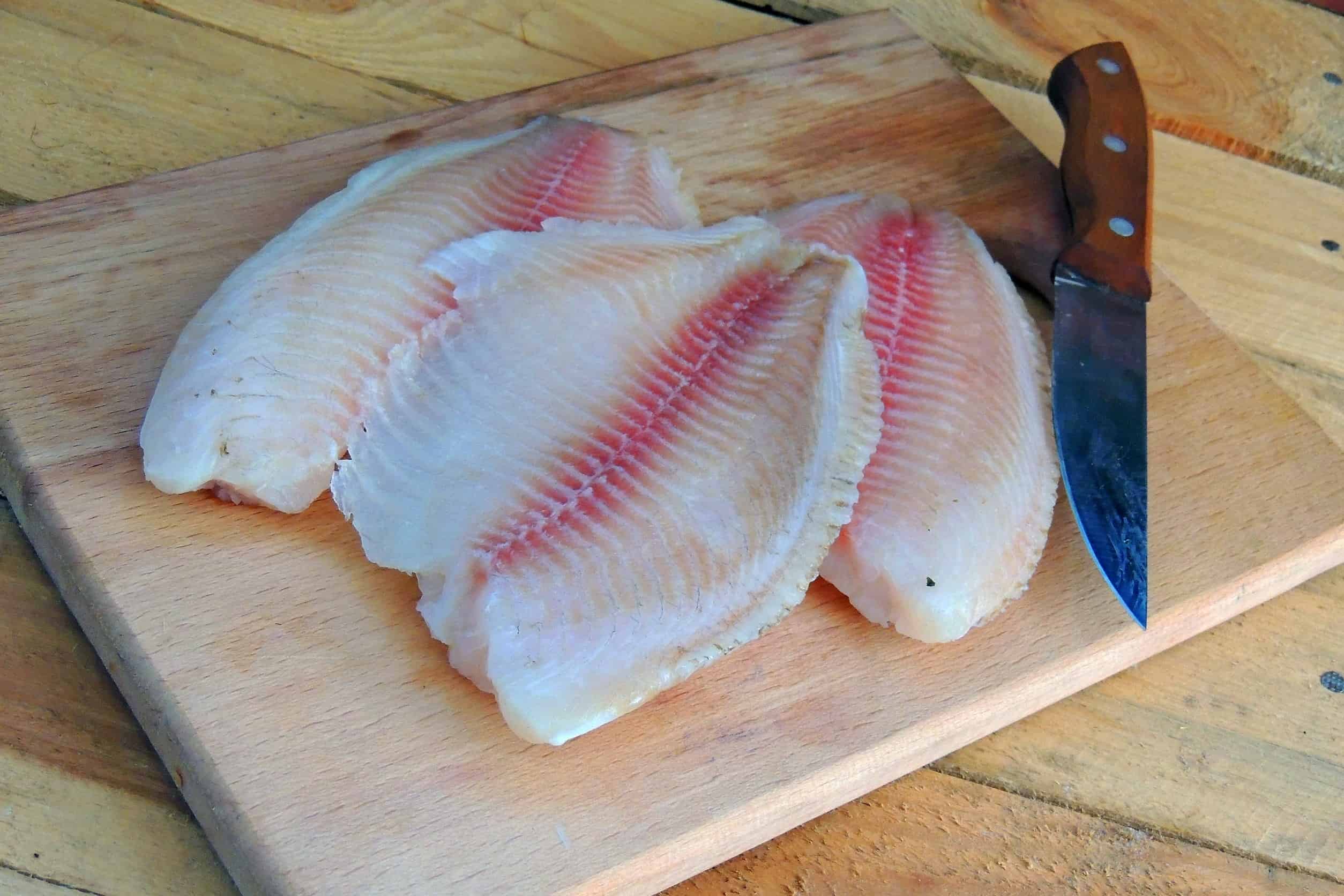
Bass of any type needs a bit of preparation before serving. Sanitation is the most important standard to meet, and a little effort here will go a long way towards ensuring your meal’s eventual quality. Don’t forget to rinse your catch in cold water before proceeding.
Descaling
You want to scrape off the outer layer of your bass’ scales. The scales carry a few infection risks and simply won’t make for a pleasant dining experience. If you’re keen on having some scales on your fillet, just stop once the first layer has been successfully cleared off. Fish scales do make for a decent source of collagen, so it might be not be a bad call to keep some scales on.
Descaling can be accomplished with a knife and persistence. Hold the bass by the tail, then reorient it so its tail is now pointing towards your chest. Gently scrape along the scaled surface with your knife of choice, with the motion moving away from your body. Repeat for both sides.
The entire process shouldn’t take more than a couple of minutes. It tends to be messy, so use a plastic bag to catch errant scale shavings.
Gutting
There’s a point below your bass’ underside with a tiny hole. Use this as a marker when cutting, making your way with the knife along their body. Your cleave should end just shy of their jaw.
You can easily pull most of their organs out from this point. Be careful not to rupture anything. Rinse the open cavities in cold water afterward. While it’s not part of their innards, we also advise you to remove your bass’ gills. They taste bitter and keeping them on spoils your fish faster.
While gutting itself isn’t hard, it takes time and effort to learn. Practice makes perfect, and if you’ve been following the right guides you’ll have plenty of bass to work with. It’s important to do this quickly because fish stomachs are full of worms and other parasites. They’ll burrow in their bodies, ruining valuable meat.
This can be avoided by gutting your catch promptly, but the most practical method at your disposal is simply freezing your fish. This makes the need to gut them less urgent. You still want to remove their innards eventually, as their organs run the risk of rupturing while cooking. We’ll go over specific temperature thresholds for that below.
Filleting (Optional)
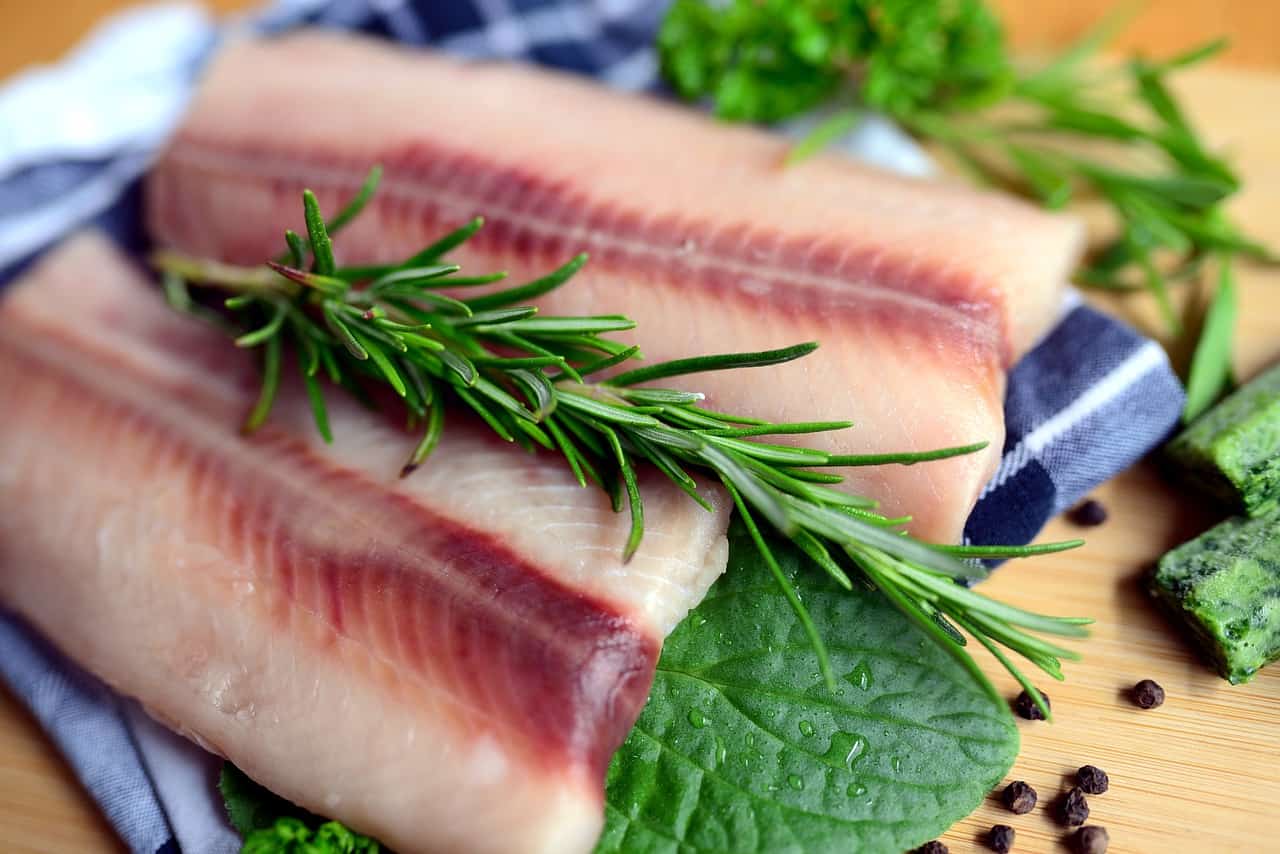
It might seem daunting to fillet a bass, but it mostly boils down to practice rather than skill. You begin by cutting into your bass, starting at the small space between their gills and pectoral fin. Work your way towards their pelvic fin, ending near the top part of their heads. Follow this up with a slice at the top, sticking as close to their backbone as possible.
From this point, it’s simply following their body structure (spine, ribcage, and other bones) all the way to their tails. It might seem complicated, but you’re just running a knife through the length of their body. Removing the skin works off a similar principle but requires a bit more care to avoid cutting into the meat. All that’s left is repeating the procedure on the other side.
If you’re handling larger bass, it might be better not to separate the first fillet cut. Keep its flesh hanging by the tail, as the imbalance can make filleting the other side needlessly difficult.
Cooking Bass
Grill
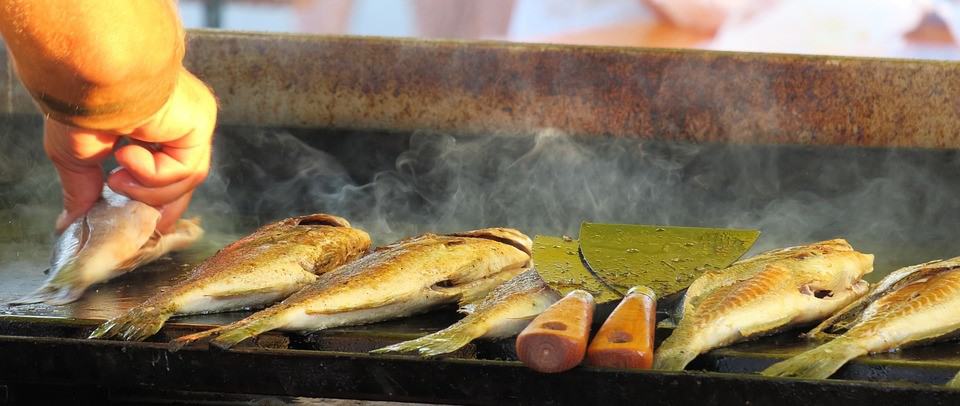
Grilling is one of the healthiest ways to prepare fish. Excess fat and oil trickle between the racks, rather than being reabsorbed in your meat. Cutting lines in your fish also helps heat reach the center faster, allowing a quick and even cook. Outside of marinades, the only components you’ll be needing are salt and olive oil.
A big problem with grilling is meat clinging to the cooking racks, making them difficult to flip and liable to burn. This is mainly a concern for unoiled grill grates.
You can turn any grill grate non-stick with a paper towel and cooking oil of your choice. We’d recommend using olive oil due to lowered free radical risk (free radicals cause cancer) and improved chemical stability in heat.
Cook for between 5-8 minutes on one side, turning it over to repeat the process. The entire ordeal can be done as is, though we’d recommend intermittently basting it in sauce, oil, or even marinade to retain moisture in your fish. This is crucial for small fillets, as they often dry out very quickly.
Bake
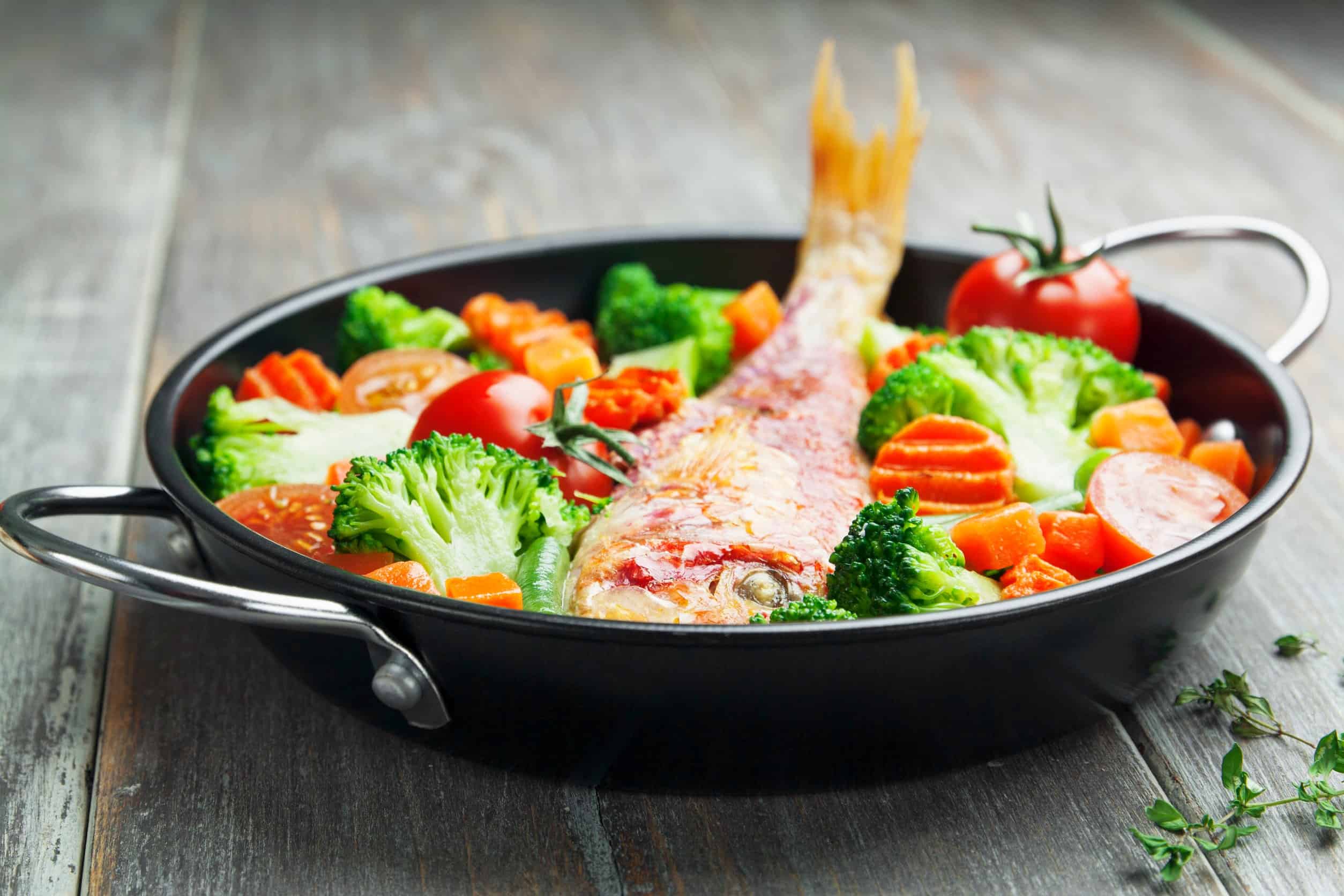
Baking is great for minimizing nutrition loss from cooking. Omega-3, omega-6, and vitamin D are retained better with this method than other options. The hands-off approach also necessitates less scrutiny on your product, giving you time to unwind and relax. Baking recipes tend to be instruction-heavy, so you’ll have plenty of guidance and little need to improvise along the way.
Baking also requires oil or fat, so be mindful of how much you’ll be using. While bass is naturally low in fat, they’ll absorb oil throughout the entire cooking duration. This is only a problem in larger quantities, but you can add other ingredients like vegetables to lower the concentration of oils your bass will absorb.
Minimize your oil use, as none of it will drain out while cooking. Oven-baked bass varies quite a bit in temperature and cooking time, so find a good recipe and stick with it. Don’t forget to preheat before cooking – missing this step could set you back up to 15 minutes.
Sauté
Sautéing is a nice way to enrich your fish, though whether or not that’s a good thing depends on your oil of choice. Canola, vegetable, and peanut oil are poor options for health purposes. When it comes to healthy sauté, you just can’t beat olive oil.
Sautéing is usually mixed up with frying, though there are some big differences to note. The former makes use of the pan’s heat to cook, while the latter banks off heat from the sizzling oil itself. In sauté, oil is primarily used to prevent sticking. Sautéing is healthier, as less oil is used. Cooking through one side takes about 5-7 minutes, but the other side will only take 1-2 minutes at most.
While it’s not the healthiest option among the choices, it’s by far the most practical. Sautéing has the shortest cook time (6-10 minutes), least preparation needed, and easiest cleanup.
General Tips
Bass meat tends to taste either muddy or mild, depending on where they were caught. The former isn’t very pleasant, while the latter won’t appeal to everyone. If you find the taste of bass lacking, try to marinate it for at least 20 minutes before cooking.
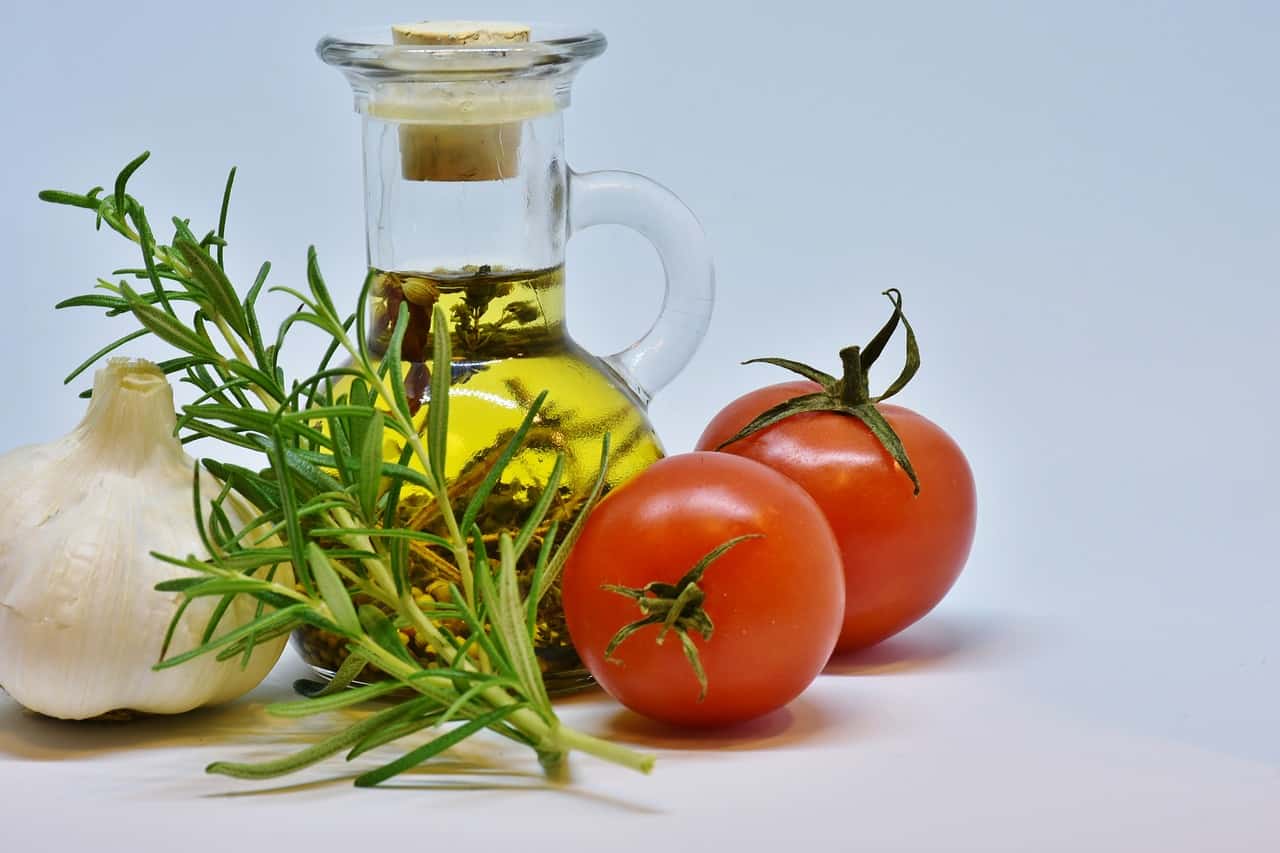
Olive oil, thyme, garlic, lemon juice, and cayenne pepper make a great starter mix. You can even set aside a portion of the marinade to serve as basting liquid – just make sure not to reuse the marinade that came into contact with raw fish.
Regardless of the cooking method, always check your meat’s internal temperature. You need to hit at least 140°F (60°C) to kill parasites and bacteria. Trying to gauge it visually won’t be reliable, so always keep a meat thermometer handy while cooking bass.
Lastly, we’d recommend keeping the skin on while cooking. The bass’ skin provides a decent buffer between heat and sensitive fish meat. It’s very easy to overcook fish, so you need all the help you can get. It also makes your bass much easier to flip: you won’t risk crumbling good meat by accident. If you don’t like the skin, you can easily peel it off after cooking.
Bass Health Risks
Bass aren’t dangerous to eat so long as you take necessary precautions. Most species of bass can be found in freshwater environments, though there are some saltwater variants in nature. Both pose their own distinct health risks.
Freshwater
Freshwater bass are more likely to have parasites, which makes it a horrible idea to eat them raw or undercooked. Common examples include yellow grubs, roundworms, and bass tapeworms. They aren’t as dangerous to humans – as we’re “accidental hosts” – but it’s best to avoid parasites entirely. Common signs include constipation, bloating, and nausea.
This can be handled by subjecting them to temperature extremes. You can do this while cooking, aiming for 140°F (60°C). While this way is convenient, the parasites could have burrowed in your bass long before that point. Instead, we recommend you subject them to a frigid -4°F (-20°C). Doing so for 1-3 days will kill most parasites, making it a much safer choice in the long run.
Saltwater
Saltwater bass tend to have more mercury in their systems. Do not feed them to pregnant women, as it could throw their hormones off. Sunlight can’t break down mercury in seawater, and no amount of treatment can safely mitigate this risk.
Final Thoughts
Bass make for great meals, but there’s a lot you need to consider. Bigger isn’t always better, as trophy-sized bass tend to be chock full of worms and toxins. Preparation takes some time to learn, but it’s well worth the effort. Find a recipe that’d suit you best and have fun cooking!
